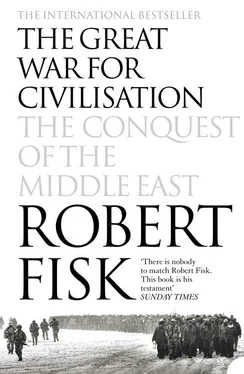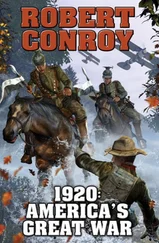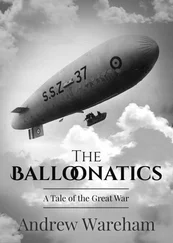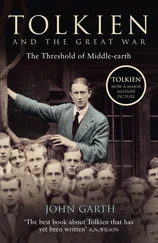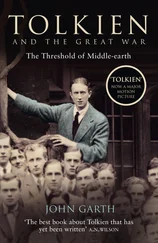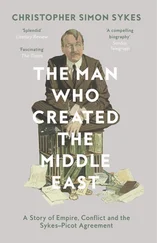Such public freedom of expression as still existed could be found in the Majlis, the institution that so many critics had once predicted would provide only a rubber-stamp parliament for Khomeini’s decrees. There was a confrontation in parliament over a series of laws on land reform, trade and the budget. Conservative members led by Rafsanjani, the speaker, wanted to preserve the power of the clergy and the bazaaris, arguing for a liberal economy and no changes in land ownership. More radical members who claimed to follow ‘the line of the Imam’ were demanding full government control of trade, land distribution and a number of social reforms that sounded like socialism. The result was government paralysis. Landowners refused to till their fields lest their property became profitable and was taken away by the state.
Khomeini had a final veto over all legislation, but his chief function now was to be a presence; he was the patriarch, produced for the relatives of martyrs or, more rarely, for foreign diplomats, a figure of solidity but no movement, of image rather than content, a mirror to past victory and what had gone before rather than to the future. His last meeting with diplomats was typical. More than sixty ambassadors, chargés and first secretaries were crammed into a minuscule room at the Ayatollah’s residence and obliged to sit cross-legged on a slightly grubby carpet, a French embassy attaché suffering severe cramp as he perched on top of a Scandinavian chargé. In due course, Khomeini entered the room and delivered himself of a fifteen-minute speech in Farsi, without translation. ‘It didn’t matter what he said,’ one of the ambassadors remarked acidly. ‘The old man sat there on a sheet on a raised dais and he was making only one point: that the Shah had received his guests in regal magnificence in his palace but that he, Khomeini, would receive us in humble circumstances.’
But each night now, Khomeini was taken off to the bunkers beneath the Shah’s old palace at Niavaran, the only air-raid shelter in all Tehran, to protect him from the war that was now his enduring legacy. As the Iraqi fighter-bombers soared unmolested over the capital, tens of thousands of his people would flee into the mountains by road. While Khomeini still demanded the overthrow of Saddam, his mullahs appeared on national television, begging the people of Isfahan, Shiraz, Ahwaz, Dezful and Tehran itself to contribute food and clothing for their soldiers at the front. Individual home towns were asked to resupply front-line units that came from their areas. In the marshes of southern Iraq, the Iranian Basiji clung on amid the hot mud and Iraqi counter-attacks.
The Iranians were now freighting their 600-kilo ground-to-ground missiles up to a new base at Sarbullzaharb in Kurdistan where North Korean engineers calibrated them for the flight to Baghdad. When they knew the rocket was approaching its target just over fifteen minutes later, the Iranians would announce the impending strike over national radio. For reporters, this could have a weird journalistic effect. ‘I’d be sitting in the bureau in Baghdad when Nabila Megalli would come through on my telex from Bahrain where she’d been listening to the radio,’ Samir Ghattas, Mohamed Salam’s AP successor in Iraq, would recall. ‘She would say that the Iranians had just announced they’d fired a missile at Baghdad. I stayed on the telex line – we had no fax then – and the moment I heard the explosion in Baghdad, I’d write ‘Yes’. The Iraqis would pull the plug five minutes later. It took twenty minutes for the rocket to travel from the border to Baghdad.’
The Iraqi raids often provoked little more than a fantasy display of antiaircraft fire from the guns around Tehran. The pilots could not identify any targets now that the Iranians had acquired new German SEL aircraft warning radar and switched off the electricity. On 2 June 1985, however, two bombs dropped by an Iraqi high-altitude Ilyushin 28 exploded on a large civilian housing complex in the Gishe suburb of the city, collapsing five entire blocks of apartments. From my hotel window – from where I had been watching the lights of the distant bomber – I saw two huge flashes of crimson light and heard a terrific roar of sound, the detonation of the bombs becoming one with the sound of crashing buildings. Hitherto, the Iraqis had fired rockets onto Tehran, so this was a new precedent in the War of the Cities. At least 50 civilians were killed and another 150 wounded in the raid. When I arrived there, it was the usual story: the cheaply-made bricks of the walls had crumbled to dust and a four-storey building – home to sixteen families – had been blown to pieces by one of the bombs. A little girl in the block had been celebrating her birthday during the evening and many children were staying the night with her family when the bombs destroyed the girl’s home. Angry Iranians gathered at the site next morning and the Pasdaran Revolutionary Guards were forced to fire into the air to clear the road.
In all of March and April of 1985, there were thirteen air raids on Tehran. Now there were thirteen a week, sometimes three a night. Only one Iraqi jet had been shot down – during a daylight raid in March – when an Iranian F-14 intercepted it over the capital. The Iraqi plane crashed into the mountains above Tehran, its pilot still aboard. Yet the Iranians could be forgiven for believing that the world was against them. In July, Iraq beganto take delivery of forty-five twenty-seater Bell helicopters from the United States, all capable of carrying troops along the war front. The Reagan administration said, in all seriousness, that the sale of the Super Transports did not breach the US arms embargo on the belligerents because ‘the helicopters are civilian’ and because the American government would ‘monitor’ their use. The sale had been negotiated over two years, during which the United States had been fully aware of Iraq’s use of poison gas and its ‘cleansing’ of the Kurds. I would later see eight of these same Bell helicopters near Amara – all in camouflage paint and standing on the tarmac at a military air base.
Yet still the martyrology of war could be used to send fresh blood to the front; the child soldiers of Iran, it seemed, would be forever dispatched to the trenches of Kerman and Ahwaz and Khorramshahr, each operation named Val Fajr – ‘Dawn’ – which, for a Muslim, also represents the dawn prayer. We had Val Fajr 1 , all the way up to Val Fajr 8 . I would walk down to the Friday prayers at Tehran University during the war and I would often see these miniature soldiers – every bit as young and as carefree of life and death as those I had met in the trenches outside Dezful. The inscription on the red bands round the little boys’ heads was quite uncompromising. ‘Yes, Khomeini, we are ready,’ it said. And the would-be martyrs, identically dressed in yellow jogging suits, banged their small fists against their chests with all the other worshippers, in time to the chants. This cerebral drumbeat – at least ten thousand hands clapping bodies every four seconds – pulsed out across the nation, as it did every Friday over the airwaves of Iranian radio and television. The audience was familiar, even if the faces changed from week to week: mullahs, wheelchair veterans of the war, the poor of south Tehran, the volunteer children and the Iraqi POWs, green-uniformed and trucked to the prayer ground to curse their own president.
Friday prayers in Tehran were a unique combination of religious emotion and foreign policy declaration, a kind of Billy Graham crusade and a weekly State of the Nation address rolled into one. A stranger – especially a Westerner – could be perplexed at what he saw, even disturbed. But he could not fail to be impressed. It was not the prayer-leader who acted as the centrepiece of this great theatre. Often this was Rafsanjani. He could discourse to his ten thousand audience on the origins of the revolution, superpower frustration in Lebanon and further Iranian military successes outside Basra. But this was almost a rambling affair. His hair curling from beneath his amami turban and his hand resting on an automatic rifle, Rafsanjani did not stir his audience to any heights of passion.
Читать дальше
